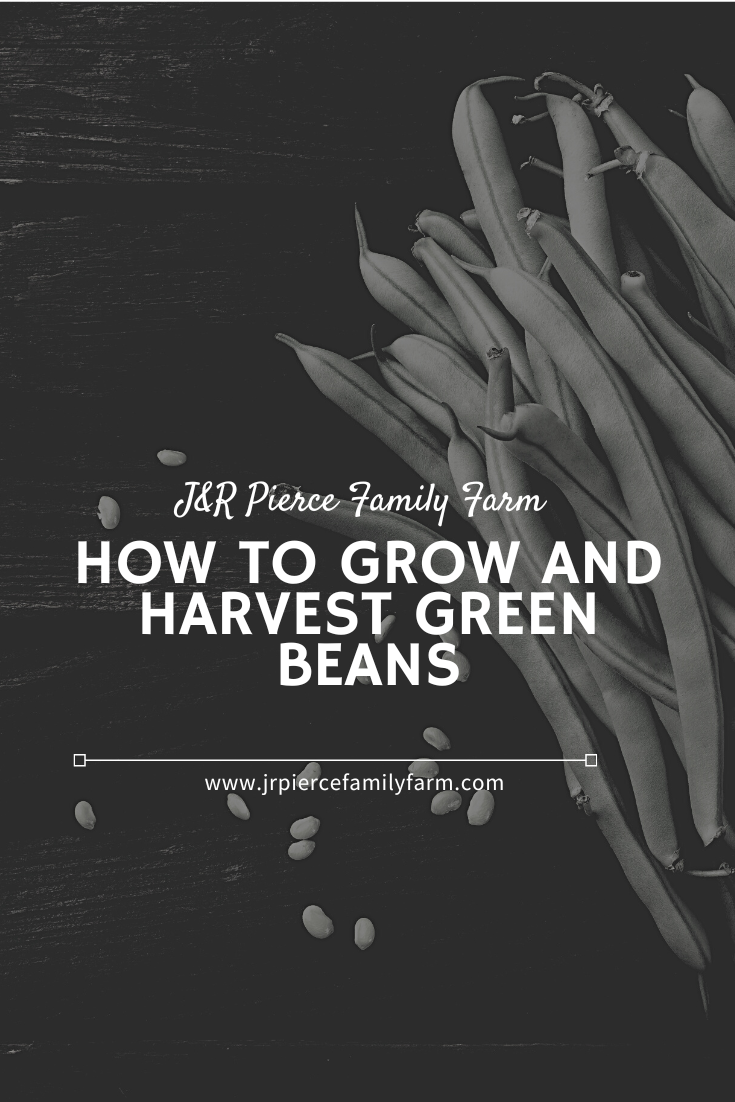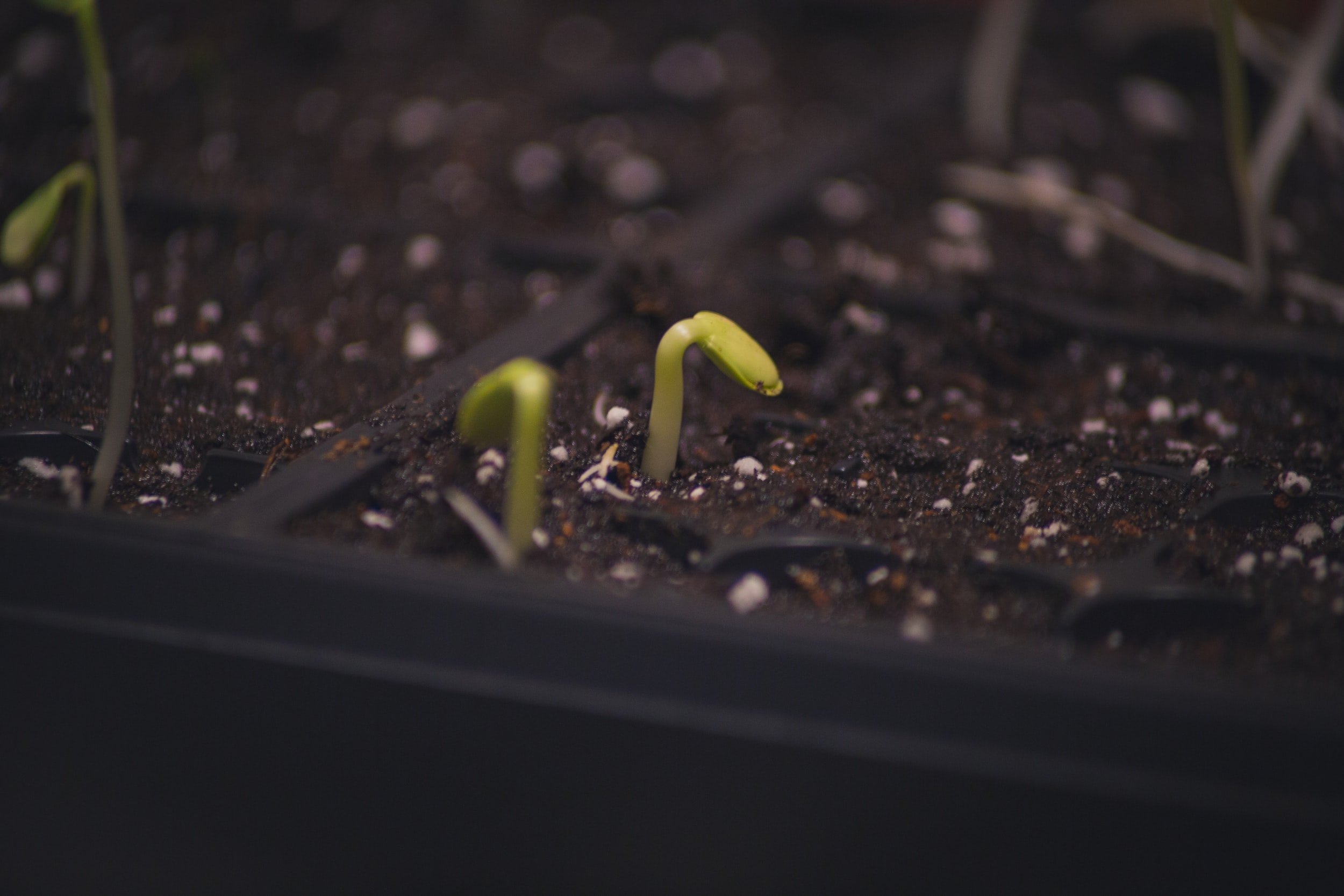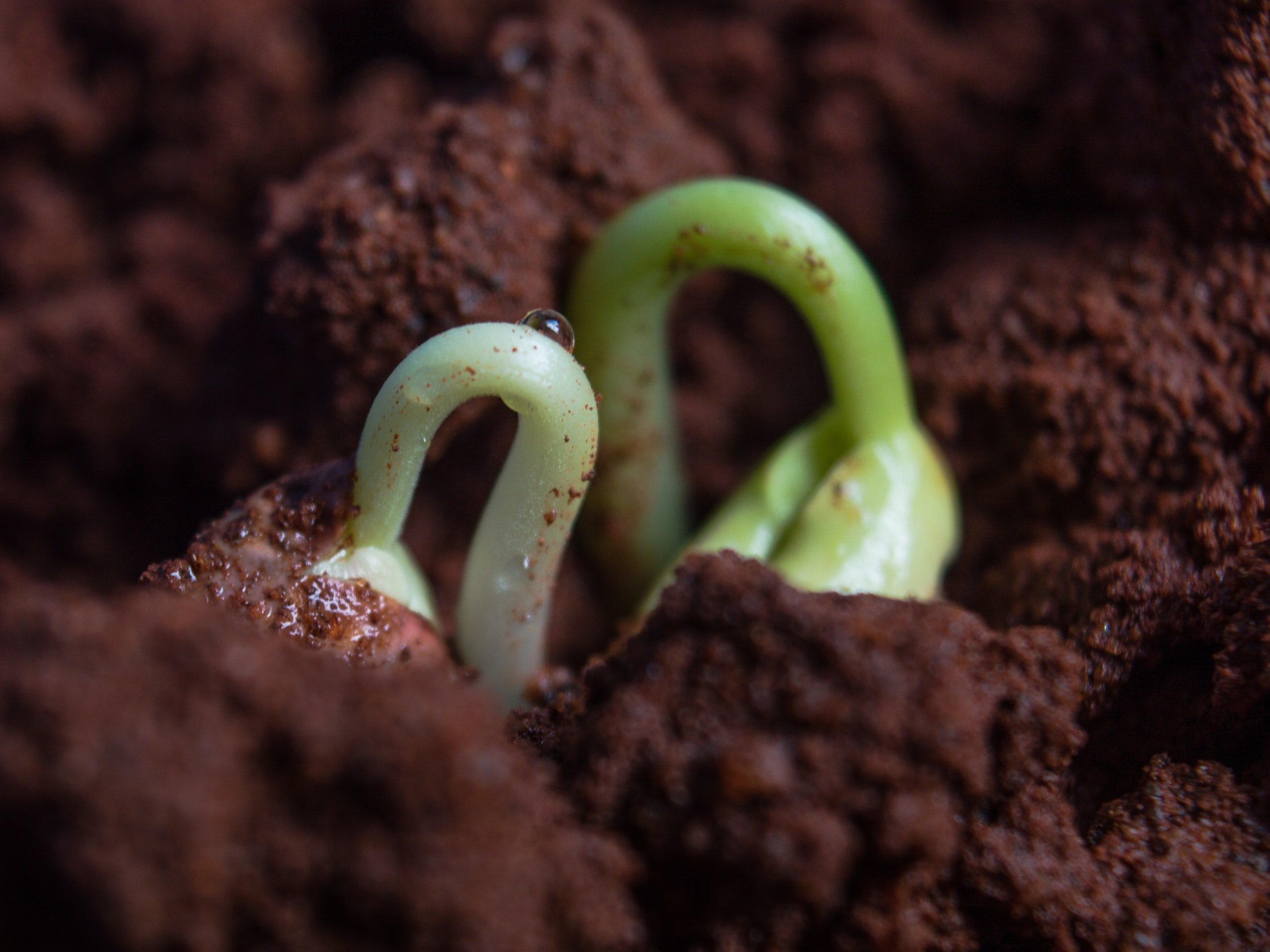How to Grow and Harvest Green Beans
Every year, I aim to try something new in my garden.
This year’s experiment was growing green beans in a pallet.
I’ve grown green beans before, of course, but never this way. I’ve always struggled growing beans in my heavy clay soil - if they’re not waterlogged from all the mud, they’re crispy from the dry heat or overcome with weeds.
BUT.
Pallets are the way to go.
I will talk about this a little further down in the post, but for right now, let me tell you everything you need to know in order to grow a bountiful crop of beans for you and your family to enjoy throughout the rest of the year.
**J&R Pierce Family Farm is a participant in the Amazon Services LLC Associates Program, an affiliate advertising program designed to allow sites to earn advertising fees by linking to products on Amazon. I often link to Amazon when recommending certain products, and if you choose to purchase, I may earn a small percentage of the sale. It costs you nothing extra, and all recommended products are ones that I personally vouch for. **
How Many Times Can You Harvest a Green Bean Plant?
This is one of the things I love most about green bean plants - they aren’t one-time harvest crops. Instead, you can return again and again:
Green bean plants can be harvested multiple times throughout the growing season.
Harvesting should occur when beans reach a desirable size and are still firm.
Picking green beans frequently encourages continued production of pods on the plant.
Here’s a video with more helpful information:
What Are the Best Green Bean Varieties?
Short answer - ALL OF THEM.
For the most part.
Beans come in two main types: bush and pole. Within each of those are a ton of different cultivars. If it’s your first time growing green beans, I recommend trying a few different varieties to see what works best for your needs.
For example, I had always heard good things about pole beans. Pole beans grow in an upright, climbing fashion, and will spread all over your garden. They tend to be high-producers, and while I’m sure that’s the case for some people, they just didn’t work well for me.
I prefer growing bush beans. These beans grow together and support each other, requiring no trellis system because they only grow about two feet tall. They come in earlier than pole beans but - typically - produce fewer beans. This has not been the case in my experience, but that’s what any gardening catalog will tell you!
Here are some popular bush bean types:
Jade: Produces straight, dark green pods, 60 days to maturity
Maxibel: 50 days to maturity, produces stringless pods but needs to be picked every few days
Contender: 55 days to maturity, produces long, flavorful pods
Provider: 50 days to maturity, compact early bush bean that can germinate in cold soil
Rolande: 50 days to maturity, grows much like Maxibel
Blue Lake: 50 days to maturity, beans mature all at once for easier harvesting
Tendergreen: 55 days to maturity, good for hot gardens and has exceptional disease resistance
Dragon Tongue: 60 days to maturity, produces yellow-purple pods
Soleil: 60 days to maturity, produces yellow pods
Pole beans, on the other hand, can grow up to 10 feet tall and need some kind of support system. They are often grown in teepees made out of branches or poles. They can take longer to start producing but will produce for longer amounts of time.
Here are some popular varieties of pole beans:
Spanish Musica: Matures in 75 days, produces roma-type beans
Trifon Violetta: Matures in 70 days, Italian heirloom bean with purple pods
Rattlesnake: Matures in 80 days, produces green streaked pods
Fortex: Produces in 60 days and results in early yields of long pods
Kentucky Wonder: Classic pole bean choice that is disease resistant and produces in 65 days
Why You Should Grow Your Own Green Beans
Green beans are delicious low-calorie foods and also have a ton of health benefits. Regardless of whether you chose to eat them raw or fresh, you’ll reap the nutrients of these tasty pods. Here are some of the most commonly touted health benefits of green beans:
High in vitamin C
Good source of dietary fiber and folate
High in vitamin K
Contains high amounts of silicon (needed for healthy skin, bones, and hair)
Contain flavonoids to reduce your risk of heart disease
May help prevent cancer and control diabetes
Improve ocular health with lutein and zeaxanthin
Green beans are easy to grow and are unique in that they improve the soil in which they grow. They have the ability to fix nitrogen from the air via nodules attached to the roots - when the roots decompose, they free up the nitrogen to be used in the soil for the following year’s crop.
How to Plant Green Beans
Green beans are pretty simple to grow - I remember cultivating bean plants in my third grade classroom, so they can’t be that hard, right?
Beans can be grown in USDA hardiness zones 3-10. They are relatively sensitive to extreme cold and heat and need daily watering.
If you’re looking for a reliable harvest, I recommend planting bush beans. They are easy to grow and require minimal time to cultivate.
Start by selecting a sunny location in which to plant your seeds. These plants need lots of space and do not do well in water-logged soil. Avoid spots that are overly shaded since they will have a harder time drying out.
Before you plant your seeds, you will want to add some fertilizer. You can use a storebought 10-20-10 fertilizer or you can spread compost for a steadier release of nutrients.
Whatever you do, try using a fertilizer that is lower in nitrogen, as this will cause lots of leaf growth at the expense of the pods’ development.
Your seeds can be sown directly outdoors after the last spring frost has occurred. Some people sow seeds indoors and try to transplant them, but I don’t recommend this. The roots are fragile and bean seeds germinate so quickly that there’s really no reason to do this.
Wait until the ground has reached at least 55 degrees. If the soil is much cooler than this, your seeds won’t germinate well.
If you’re planting pole beans, go ahead and set up your trellis now. You can use a cattle panel, sections of wire fence, or wooden stakes. Here are some other options as to how you can stake up your green beans.
Each seed should be planted roughly an inch and a half deep. Make sure the seeds are three inches apart and cover them loosely with soil. I recommend spacing plants more closely together than is recommended on the seed packets to help reduce weed germination.
You do not need to soak the seeds before planting or immediately after. Green bean seeds that are too wet have a tendency to crack and break.
Growing Green Beans in a Container
If you live in an environment that is not conducive to growing green beans - or if container growing is simply your preferred method of agriculture - you can easily grow some beans in this way, too.
You’ll want to use a reasonably large pot - ideally around 8 to 20 inches in diameter. Fill it with loose, nutrient-dense soil. Follow the same growing recommendations I outlined above.
The only caveat to this is if you are growing pole beans. These should have a trellis system added in when you plant your seeds - don’t wait until the seedlings emerge as this can impede their growth.
Container-grown plants tend to dry out more quickly than their in-ground counterparts. Make sure you are watering your beans regularly.
Growing Green Beans in a Pallet
As I mentioned earlier, this year was an experiment in planting in pallets. Now that I’ve tried this, I’ll never go back to planting green beans any other way - and I’m also going to try it with other vegetables next year, too.
The benefits of pallet gardening are as follows:
It saves space if used vertically, giving you more production.
It helps prevent soil diseases.
It’s great for apartment dwellers or people who are gardening in the city.
There are no expensive lumber costs that are usually associated with building raised beds.
If you lay your pallets on the ground, like I did, it saves water, keeps plants moist, and protects the roots.
There are really no cons to using pallets in the garden. The soil resists erosion, and I’ve found that I don’t need to add any fertilizer at all.
To do this, start with your pallet (obviously). Try to use one that was heat-treated and not treated with chemicals. Other than that, the type of pallet you use does not matter. You just want to make sure it is food-friendly.
I used a standard square pallet laid flat on its back. After cleaning the pallets, I plopped them into position - I chose to put them at the edge of our garden near the compost bin, where the soil was already enriched with plenty of fertile organic matter.
I packed extra potting soil and compost between the boards of the pallet to create “rows,” making sure the rows were level with the boards. Then, I planted into it just as I normally would. I didn’t really pay any mind to spacing and planted extremely tightly.
Then, I waited for about two weeks to watch for seedlings.
That’s literally all there was to it.
I have not weeded or fertilized this bed ONCE this season. The green beans are growing so vivaciously that they are choking out everything else - and I am enjoying one heck of a crop.
I can’t speak to vertical planting of green beans, but I know lots of people do it. Here’s a tutorial in case you are interested in learning more.
Caring for Green Bean Plants
After planting, you should mulch around your green bean seeds. A good choice is straw or wood chip mulch. Green bean plants can easily be overwhelmed by weeds, so adding mulch will help repel them and also help the soil retain moisture. This should be applied about three inches thick.
If you want to have a continuous harvest, you can plant several batches of green beans in succession. Sow every two weeks if you want a continual harvest. Stop planting about ten weeks before the first expected crops.
Water your green beans daily. You should do this in the early morning and water on sunny days so that the foliage does not become sodden, which can make the plants more prone to fungal disease. These plants need about an inch of water each week. Keep in mind that too much or too little water late in the growth cycle can cause your plants to drop pods and blossoms.
You shouldn’t need to apply any fertilizers to your garden, but if you’d like, you can apply a natural fertilizer like compost tea. Fertilizer should only be applied if the nutrient levels are extremely low - make sure you test them with a soil pH test kit before adding any fertilizers. Green beans prefer soil with a pH between 6.0 and 6.5.
Be careful removing weeds - green beans have very shallow roots, so weeding can be a challenge around these vulnerable plants.
Green beans aren’t terribly prone to many types of disease, but you will need to watch out for pests like mites, aphids, and cutworms. They can also suffer from diseases like white mold, mosaic virus, and fungal growths. Maintaining a proper watering schedule and keeping the garden weeded can help prevent these issues.
Harvesting Green Beans
I recommend picking the beans while they are still somewhat immature. Make sure the pods are firm, and you will be able to snap them off without ripping the stems, which can damage the plant. You should look for beans that are pencil-width or slightly smaller in diameter.
You will usually be able to harvest about sixty days after planting - or fifteen days after they bloom. Try not to let the pods hang on the plant longer than necessary, because they will be stringy and tough. Seeds should not be allowed to develop because they will become hard.
When you harvest the beans, you should snap the tips off and move the long strings. Snap it into several separate pieces and wash the beans carefully. You can store the beans in the refrigerator for seven days, or you can pickle, can, or freeze them for long term storage.
Uses for Green Beans
In the market for some good green bean recipes? Be sure to check out my post here about the 21 Best Green Bean Recipes you will find!
Green beans taste great no matter how you use them, whether that’s in soups, stews, sautees, salads, or entrees. You can even eat them raw - which is my husband’s (and dog’s) favorite way to munch on beans. They taste great when paired with dips, too!
What are your favorite green bean recipes - or green bean growing tips? Let me know in the comments!
Want to learn more about farming? Be sure to check out these featured articles!
Subscribe to our email newsletter for regular tips and tricks on homesteading and farming – wherever you are. You can also follow us on Instagram (@jrpiercefamilyfarm) and Pinterest (J&R Pierce Family Farm) for frequent updates. Happy homesteading!










